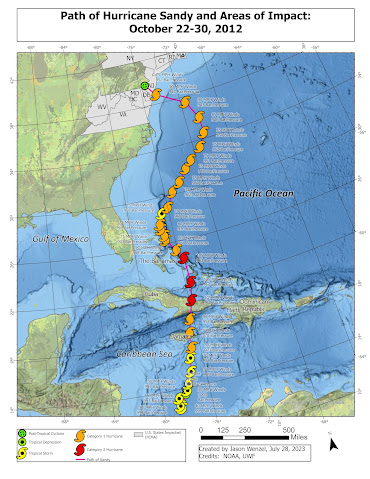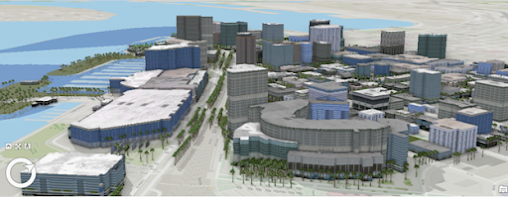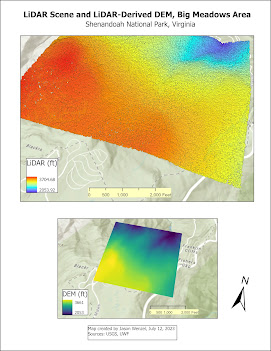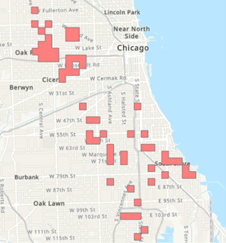Hazards: Damage Assessment

This week in GIS 5100 we continued the study of hazards with a focus on damage assessment. For the first part of the assignment, we were directed to create a map based on NOAA data of the track of Hurricane Sandy, also known as "Superstorm Sandy" showing its progression from a tropical storm in the southern Caribbean Sea on October 22, 2012 to its landfall on the northeastern coast of the United States as a Category 1 hurricane on October 29, 2012. The path of the storm is symbolized by its type along with labels showing MPH winds and barometric pressure in specific points. The storm's maximum wind speed reached 105 MPH and the lowest barometric pressure was 940. For the next part of the assignment, I created a brief survey with ArcGIS Survey 123, which is an online platform that allows individuals to report damage and submit photographs in the field that are geocoded and can help complement remote-sensed data: Hurricane Sandy Citizen Damage Assessment* *This survey is o...



